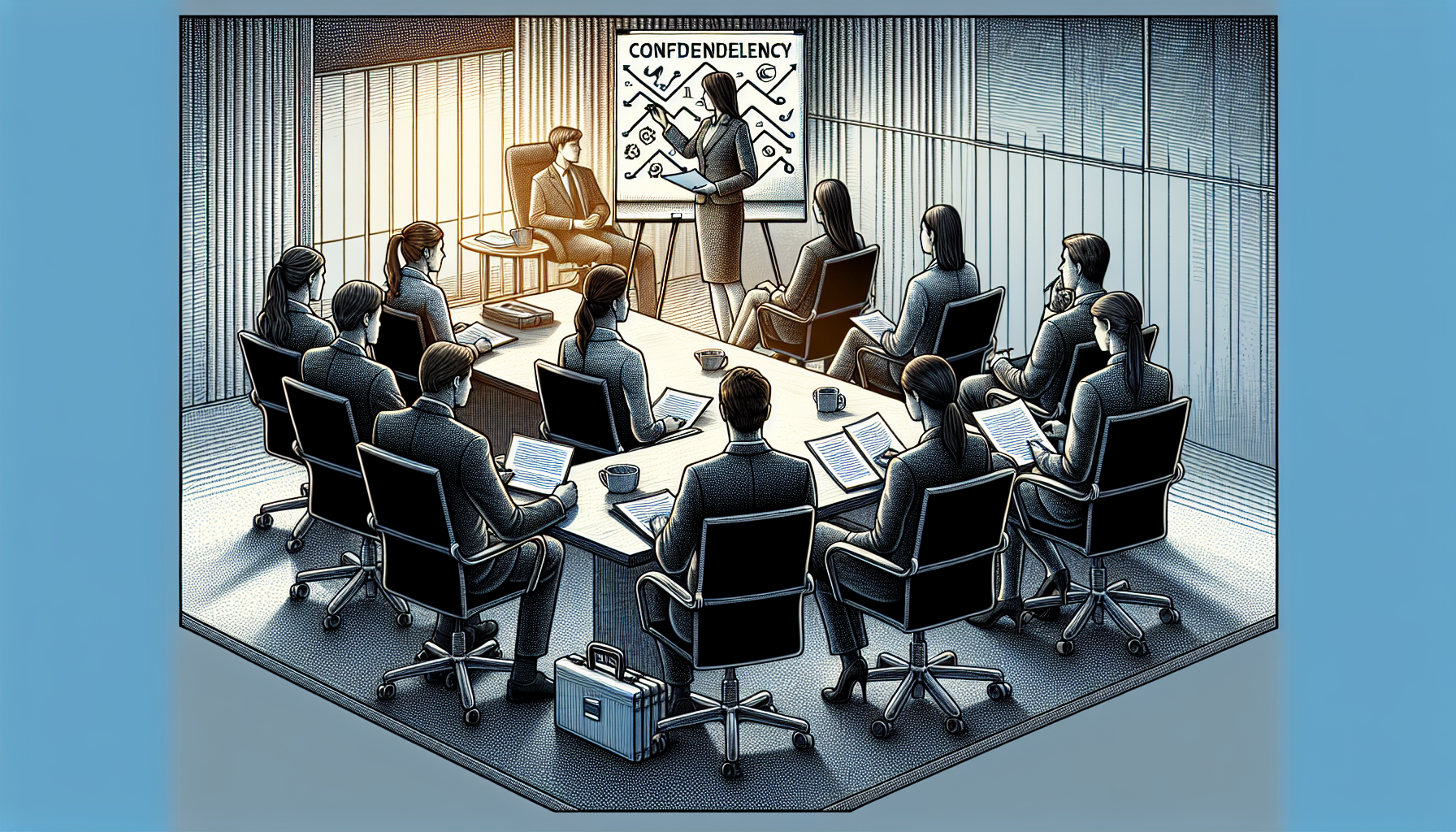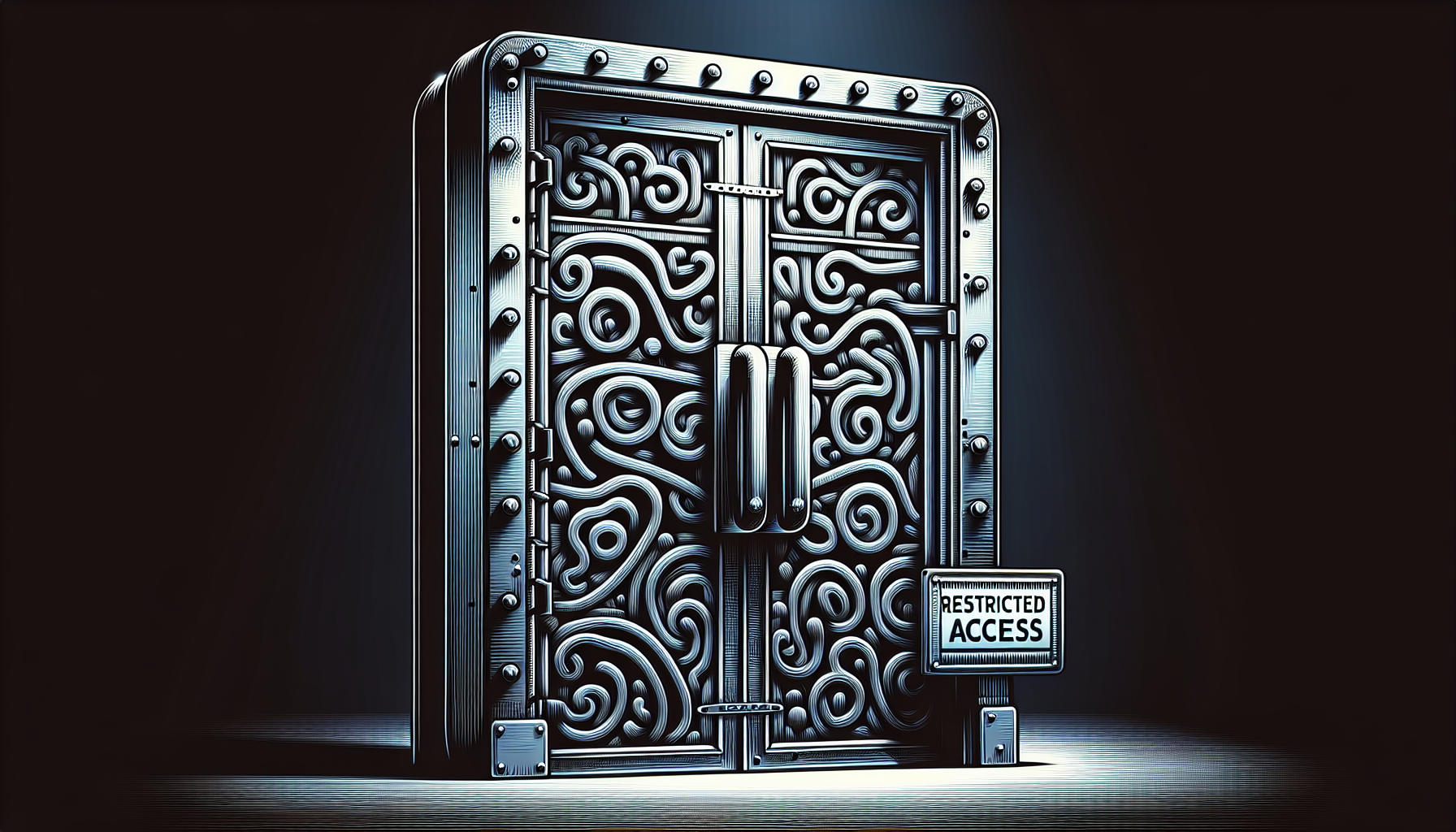Short Answer:
Confidential employee information is crucial for workplace trust and HR integrity, including personal data like social security numbers and sensitive details like health records. It extends to performance reviews, disciplinary actions, and business-specific data, protected under laws like ADA and GINA.
Introduction & Background
Navigating the intricacies of legal frameworks and the safeguarding of sensitive information has been a cornerstone of my career. My journey from the classrooms of the University of Florida’s Fredric G. Levin College of Law to the boardrooms of high-stakes Venture Capital and M&A transactions has ingrained in me a deep appreciation for the nuances of confidentiality in the workplace. This is not just about legal compliance; it’s about fostering a culture of trust and ensuring the integrity of every transaction and interaction. My extensive experience, especially in handling delicate negotiations and protecting intellectual property, equips me with a unique lens through which to view the protection of confidential employee information—a critical asset in any organization’s portfolio.
Drawing upon my years of practice, including pivotal roles at leading law firms, I’ve come to understand that confidential information is the lifeblood of strategic decision-making. This understanding is not just theoretical but rooted in real-life applications, where the stakes are high and the margins for error are slim. My perspective is shaped by the confluence of legal expertise and practical experience, allowing me to approach the topic of confidential employee information not as a mere legal requirement but as a strategic imperative that underpins organizational success and sustainability.
Key Takeaways
-
Confidential employee information includes personal data, performance reviews, disciplinary actions, trade secrets, and sensitive financial data, with strict legal obligations under various laws for its protection.
-
Safeguarding confidential employee information requires implementing physical, technical, and administrative measures, such as secure storage, robust cybersecurity, and continuous employee training.
-
Handling confidential information involves regulated access by HR, employees’ statutory rights to review their files, and managers’ need for information for decision-making, while ensuring legal compliance, especially for health-related data.
Defining Confidential Employee Information
At the heart of confidentiality in the workplace is the establishment of trust and open communication. Confidential employee information serves as the cornerstone for the integrity of the HR department and your organization’s reputation.
Confidential employee information entails protecting sensitive data related to employees. But what does such information include?
Types of Confidential Information
Confidential employee information encompasses more than just personal data such as social security numbers, birth dates, and home addresses. It also includes sensitive employee information, such as health-related details, which should be kept separate from an employee’s personnel file.
Confidential employee information includes:
- Performance reviews
- Managerial information like disciplinary actions or redundancies
- Business-specific information like trade secrets and sensitive financial data
Legal Obligations
The field of HR is guided by a combination of workplace and employee information regulation laws, often outlined in an employee handbook. These include very strict rules, such as federal and state anti-discrimination laws that mandate the confidentiality of information such as age, sex, religion, race, or national origin.
Medical or genetic conditions of employees are protected under the ADA and GINA, requiring employers to maintain confidentiality. Breaching confidentiality can lead to legal actions, including injunctions, fines, or even imprisonment, depending on the severity and the laws breached.
Safeguarding Confidential Employee Information

Ensuring the protection of sensitive employee data is a critical role for HR. This involves implementing administrative, technical, and physical controls to secure employee records.
But what does this entail?
Physical Security Measures
Physical security measures are a key part of safeguarding employee information. Here are some measures to consider:
-
Paper records containing sensitive information should be stored in locked locations, with access strictly limited to authorized individuals.
-
Storage environments should be fireproof, have regulated temperature and humidity levels.
-
Storage environments should be free of non-essential materials, including flammable items.
Emergency preparedness, such as plans for backup storage of files in alternative locations during natural disasters, is also a critical aspect of physical security. Based on risk assessments, physical security can be augmented with window bars, anti-theft cabling, and magnetic key cards.
Digital Security Systems
On the other hand, electronic employee records should be:
- Encrypted
- Organized by security risk
- Accessible based on custom permissions and a need-to-know policy
- Regularly evaluated for vulnerabilities
- Handled securely to protect sensitive documents.
Robust cybersecurity measures, such as network intrusion detection, antivirus software, and encryption tools, are crucial in protecting against potential threats.
Employee Training

While physical and digital security measures are essential, it’s equally important to invest in ongoing employee training on confidentiality policies. Training sessions should provide relevant and practical real-world examples, bringing awareness to the risks of confidentiality breaches and their potential consequences.
Interactive demonstrations, like live hacking examples, can effectively demonstrate the importance of confidentiality in a tangible way.
Access to Confidential Employee Information

Access to confidential employee information should be tightly controlled. Typically, the HR department is the only one with access to an employee’s file, with certain personnel granted access if their job duties require it.
But what about the employees themselves and the management?
Human Resources Department
HR professionals have a critical duty to maintain the confidentiality of investigations, which includes protecting witness statements, testimonies, and other sensitive information. They also have access to sensitive business information,such as management strategy and workforce data, essential for business operations.
When a complaint is made or a potential breach identified, HR must maintain confidentiality, provide protection to involved parties, and initiate an investigation to address the situation.
Employees’ Rights
Employees in certain states are granted a statutory right to access their personnel files. This means they are legally entitled to:
- Review their employment records
- Be given access within a reasonable time after a written request
- Be notified when negative information is added to their files.
- Public-sector employees’ rights to access their personnel files, including personnel records, can differ significantly from those of private-sector employees, often governed by open-record or freedom-of-information laws.
Management and Supervisors
Management and supervisors often need access to employee personnel files for critical decision-making processes like reviewing for promotions, handling layoffs, and considering terminations for cause. Performance reviews and disciplinary records are essential parts of employee personnel files that managers and supervisors should access for effective decision-making.
However, it’s incumbent upon supervisors to protect the confidentiality of personnel files, restricting access to instances of legitimate business needs.
Handling Medical and Health-Related Information

Medical and health-related information is a special category of confidential employee information. It must be stored separately from the general personnel file, in compliance with ADA and GINA regulations.
But how exactly should this be handled?
Legal Compliance
Under the ADA, employers are required to:
- Keep medical information obtained from disability-related inquiries or medical examinations confidential, including voluntary disclosures by employees
- Restrict disability-related inquiries and medical examinations of employees
- Set specific rules for different employment stages
Voluntary wellness programs are permissible under the ADA, subject to certain conditions, keeping confidentiality intact.
Storage and Access
When it comes to storage, employers should create and maintain separate files for medical records, investigations, and other sensitive information to ensure secure storage. With health insurance portability in mind, when employers need to release medical information, they must adhere to HIPAA guidelines, which include verifying the identity of the requester and having patient authorization.
Responding to Confidentiality Breaches
Responding to confidentiality breaches is a delicate matter that requires a comprehensive approach. When breaches occur, the employees involved may lose trust in the HR department. They may begin to question its ability to safeguard sensitive information..
So, how can an organization effectively respond to confidentiality breaches?
Identifying Breaches
Identifying a breach involves documenting the evidence and formally notifying the involved employee in writing. Suspicious behaviors such as requesting sensitive information without clear reasons, excessive use of communication devices, or working outside normal business hours could indicate a confidentiality breach.
Financial records, expert testimony, and witness statements are forms of evidence crucial for proving a confidentiality breach and identifying responsible parties under the Accountability Act. Additionally, tax forms anddirect deposit forms can be relevant in certain financial investigations.
Reporting and Investigating
Once a potential breach is identified, employers are legally obligated to investigate complaints to ensure the protection of all parties involved. A comprehensive plan for a thorough workplace investigation,should include:
- An issue outline
- A witness list
- Interview questions
- A documentation process
Impartial and objective interviews during the investigation are critical for gathering relevant facts and should be conducted without bias or premature conclusions.
Corrective Actions
Once a breach has been confirmed, appropriate corrective actions must be taken. These can include:
- Warnings
- Suspension
- Termination
- Legal action
If the employee has caused substantial damage, legal advice becomes crucial to explore further actions such as injunctions or claims for damages.
Additional training for employees to prevent future breaches based on the investigation’s findings may also be necessary.
Summary
In conclusion, safeguarding confidential employee information is a critical responsibility that requires a holistic approach. From understanding what constitutes confidential information, implementing robust security measures, limiting access, handling medical information, to responding to breaches, each step is crucial. By adhering to these best practices, organizations can not only ensure legal compliance but also foster a culture of trust and openness.
Frequently Asked Questions
What is confidential information in the workplace?
Confidential information in the workplace refers specifically to personal identifying information, such as employment contracts or driver’s license numbers, and not management information related to an employee’s career journey. This distinction is important for protecting employees’ privacy and sensitive data.
What does confidential employee mean?
A confidential employee is someone who either develops or presents management positions in meetings or requires access to confidential information essential for the development of such management positions.
What personnel information is confidential?
Employee personal information such as address, Social Security number, and medical details should remain confidential, and employers should not share it without the employee’s consent. This includes social security numbers, birth dates, home addresses, and spousal information within employee personnel files.
What information are employees required to hold confidential?
Employees are required to hold confidential company-assigned information such as organizational charts, job titles, and department budgets. Personal and professional information, including social security numbers, date of employment law, of birth, and job application data, must also be kept confidential.
What physical security measures can be taken to protect confidential employee information?
To protect confidential employee information, it’s important to store paper records in locked locations, use fireproof construction, regulate temperature and humidity, and have backup storage plans in case of emergencies. These measures can help prevent unauthorized access or loss of sensitive data.



